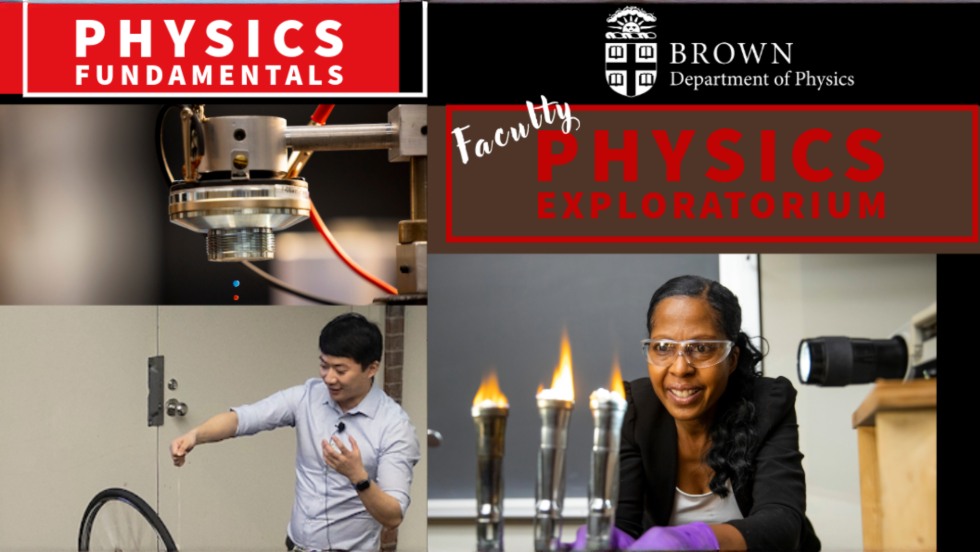On Friday, April 25, the “oohs” and “ahhhs!” reverberated delighted awe throughout the Engineering Resource Center (ERC) during the Physics Department’s Physics Fundamentals Exploratorium 2025, helmed by Demonstrations Manager Angella Johnson. The event included over twenty new physics laboratory demonstrations led by the Physics Ph.D. Program’s Sara Alkidim, Calvin Bales, Ph.D., Erin Morissette, Ph.D., Sc.M. Candidate Peiyu Qin, and undergraduate concentrators Regan Doherty, Corbin Aquino, and Darren Duan, among others.
Much to the delight of students from the French American School of Rhode Island (FASRI), Laboratory Physicist Alexander Lombardi demonstrated the Greek Waiter’s Tray, a unique visual illustration of centripetal force that shows how a tray of water-filled glasses can be swung in circles without spilling the water.
Why are physics demonstrations so popular? The possibility of failure is high on the list! With physics, as in life, failure is an exercise in learning. Lombardi says that the “element of danger or high probability that something will go wrong” increases the popularity of a physics demonstration, such as the Tablecloth Trick, which elicited gasps of amazement from the FASRI students, and the Greek Waiter’s Tray. “There's a good chance I would get wet or break a bunch of glass. In that regard, my practice paid off, and they were left disappointed, but I think the anticipation still made it thrilling.”
Lombardi gamely led another student favorite: the Bicycle Generator, demonstrating how mechanical energy from pedaling a bicycle can be converted into electrical energy to power light bulbs. The Bicycle Wheel Gyroscope is Alex’s favorite because, “even if you understand the physics, it still feels like a bit of magic.” Lombardi said the older students were inquisitive about the sound tubes and the smoke cannon, specifically, how the sound tubes produced different notes, and were “fascinated by how the Smoke Cannon produced rings.” Older students, he says, “mostly wanted to try the demos for themselves, which I was more than happy to encourage!”
Other demonstrations included the Floating Bubble Density Demonstration, an Einstein Face Illusion, a Van de Graaf Generator with Tinsel Wig, and a Modular Circuits Kit. Approximately 50 students from Brown and FASRI filled the ERC to experience hands-on physics, some for the first time. Professor Rick Gaitskill, overseeing the Floating Bubble Density Demo, posed questions on water density to a student who admitted they were not in the physics program, but were drawn to the unique aspect of the event, as well as “the magic of physics.”
Lombardi acknowledged Demonstrations Manager Angella Johnson, the driving force behind Exploratorium 2025, the success of which he attributed “largely to [her] vision, hard work and careful planning. What started as a way to showcase demos for faculty as inspiration for their courses evolved into an exciting outreach opportunity that brought in curious learners of all ages.” He also recognized the “staff and volunteers across the department who helped make everything run smoothly.” Ultimately, he says, the event worked because “learning physics is fun and we gave people the chance to engage with it hands-on.”
